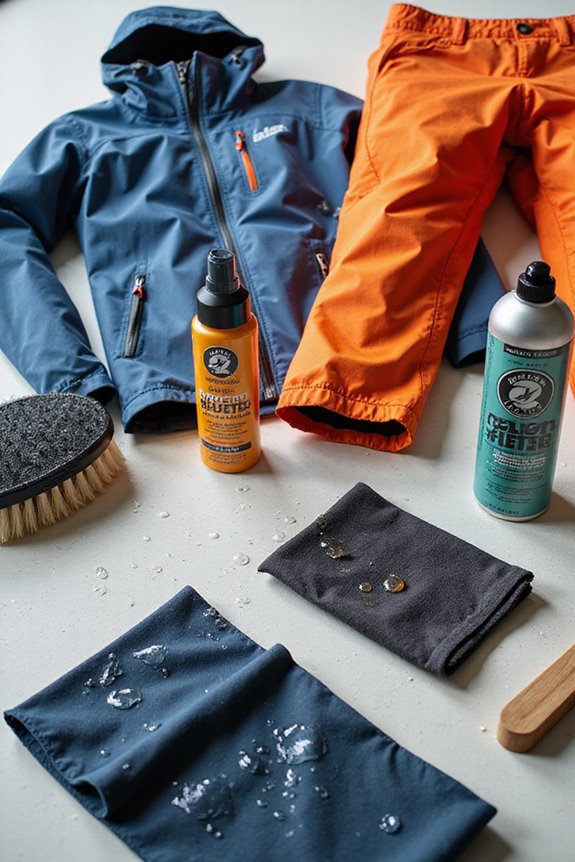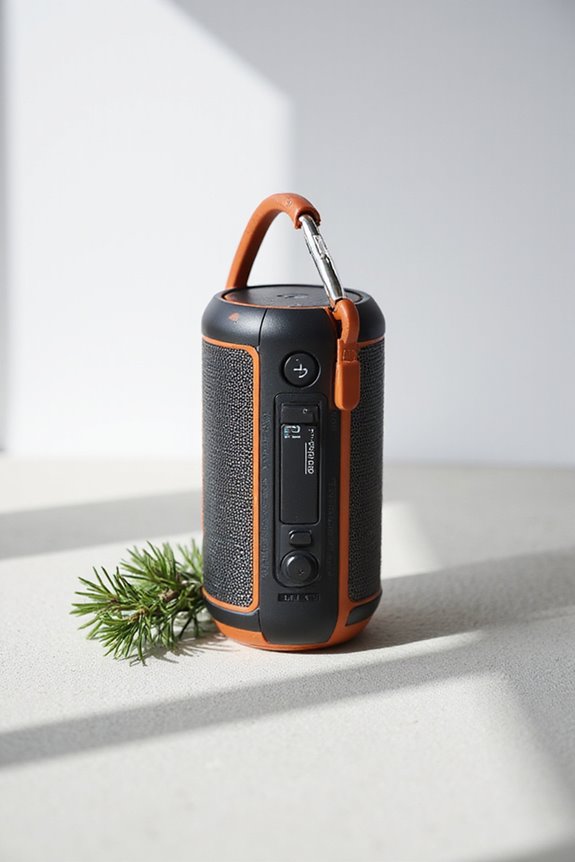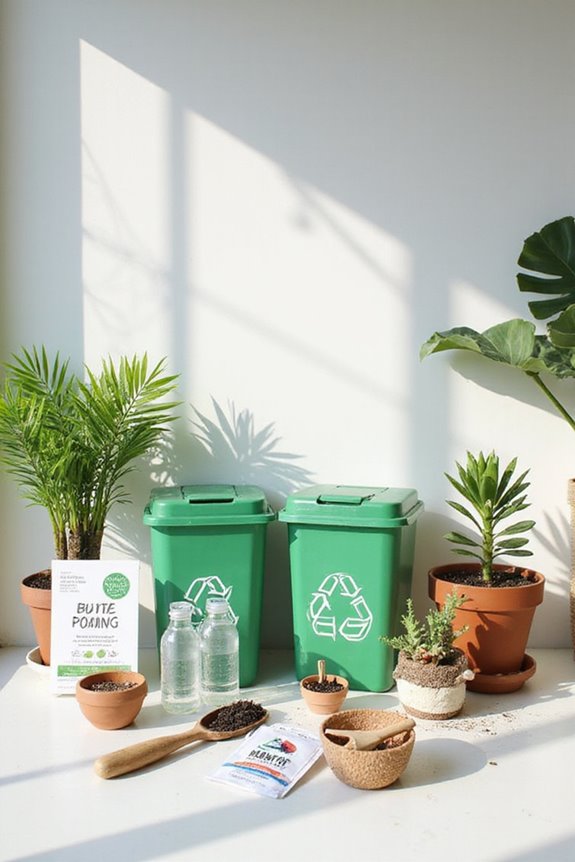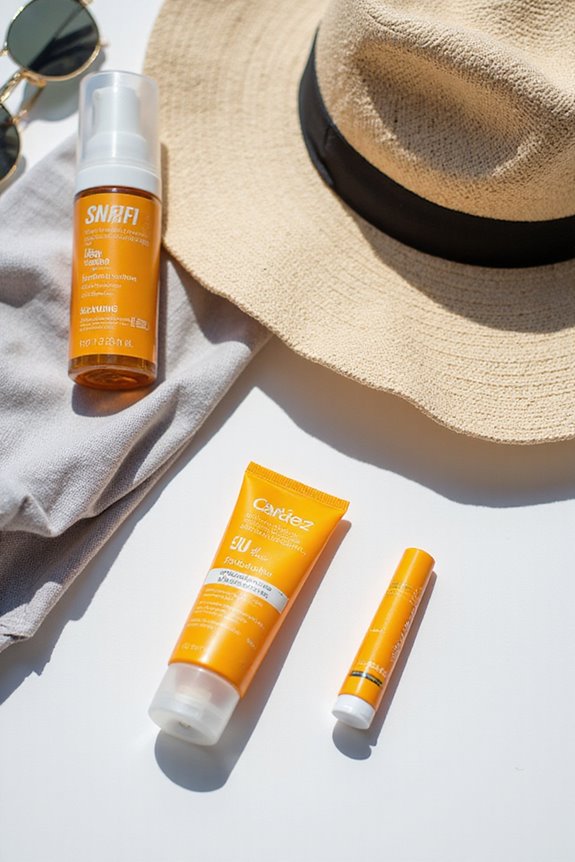Caring for technical outdoor fabrics is a breeze if you keep a few things in mind. First, always check for dirt or damage before you clean. A little brush to remove loose dirt goes a long way. Use mild soap with lukewarm water—no harsh stuff, please! Hand wash gently and let air dry to keep those fabrics happy. Regular checks for wear and using fabric protectants can really extend their life. Want more tips? Keep that curiosity alive!
Key Takeaways
- Inspect technical fabrics for stains or damage before cleaning to address issues promptly.
- Remove loose dirt with a soft brush to prevent abrasion and fabric damage.
- Clean with mild soap and lukewarm water; avoid harsh chemicals that can degrade material.
- Hand wash by soaking and gently agitating with a sponge, then air dry to maintain integrity.
- Regularly apply fabric protectants to shield against water spots and UV rays for extended lifespan.
Understanding Technical Outdoor Fabrics
When it comes to outdoor adventures, the right gear can make all the difference, and that’s where technical outdoor fabrics come into play. These innovative materials boast incredible breathability features, ensuring sweat evaporates efficiently, keeping adventurers dry and comfortable. Imagine hiking up a steep trail, the sun beating down, yet you feel fresh thanks to the fabric’s moisture-wicking abilities. Furthermore, temperature control technologies help maintain an ideal body temperature, making them perfect for varying weather conditions. Lightweight yet durable, these fabrics allow for easy movement while withstanding the rigors of nature. Whether camping or climbing, understanding these fabrics can elevate any outdoor experience, allowing you to conquer the great outdoors without the worry of discomfort or overheating.
Importance of UV Resistance
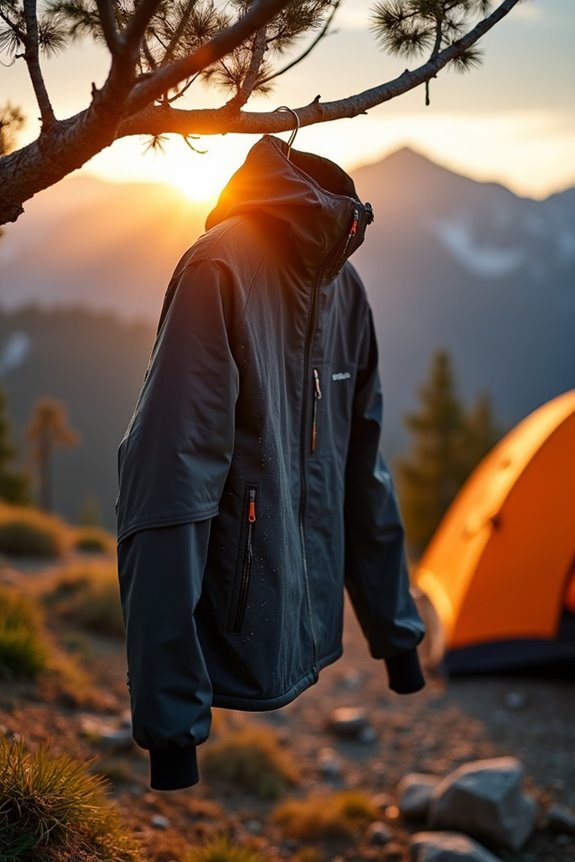
Although many outdoor enthusiasts might focus solely on the technical features of their gear, the importance of UV resistance in outdoor fabrics should not be underestimated. UV protection benefits go beyond just keeping colors vibrant; they also shield against harmful rays that can lead to skin damage. Imagine lounging under a UV-resistant canopy, knowing that the fabric not only looks great but also protects your skin from the sun’s harsh glare. With advanced UV fabric technology, these materials resist fading and cracking, extending their lifespan and saving you money in the long run. So, whether you’re hiking, camping, or just chilling outdoors, investing in UV-resistant gear keeps you safe and comfortable while enjoying nature’s beauty.
Water and Stain Resistance Features
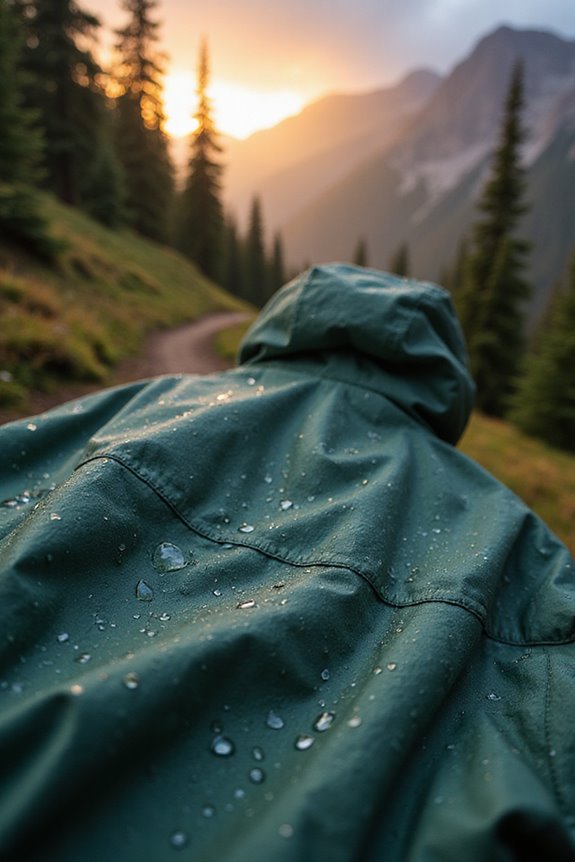
Water and stain resistance features in outdoor fabrics are essential for anyone who loves spending time in nature, especially when unpredictable weather and messy adventures are part of the plan. Many outdoor fabrics leverage waterproof technologies, like lamination or coatings, ensuring that water beads up and rolls off, keeping you dry on that surprise hike. Stain treatments, such as Durable Water Repellent (DWR) finishes, work wonders, making spills a breeze to clean up rather than a permanent reminder of your last picnic mishap. Fabrics woven tightly with high yarn counts further enhance these properties, resisting both water and stains. So, whether it’s a sudden downpour or a spilled drink, these advanced materials have you covered, literally!
Assessing Durability: Abrasion and Tear Resistance
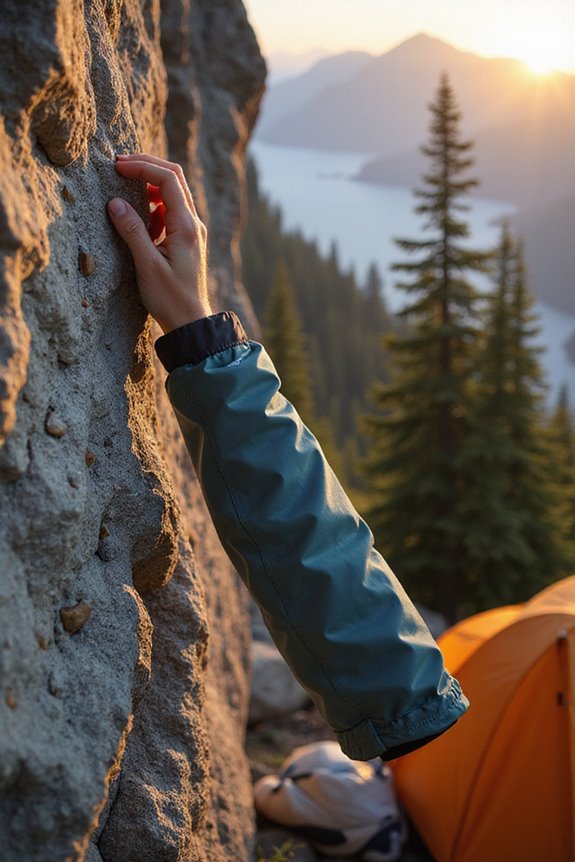
Outdoor adventures often come with their own set of challenges, and when it comes to gear, durability is paramount. Evaluating a fabric’s durability involves two key tests: abrasion testing and tear strength. The Martindale and Wyzenbeek tests measure how well fabrics resist wear, with results indicating if they can handle the rigors of outdoor use. For instance, fabrics scoring over 40,000 cycles are ready for heavy-duty action. Tear strength, on the other hand, evaluates how much force a fabric can withstand before giving in, using methods like the tongue tear test and the trapezoid test. Fabrics made of tightly woven synthetic fibers typically excel here, proving they can brave the elements while keeping adventurers comfortable and secure.
Cleaning Techniques for Outdoor Fabrics
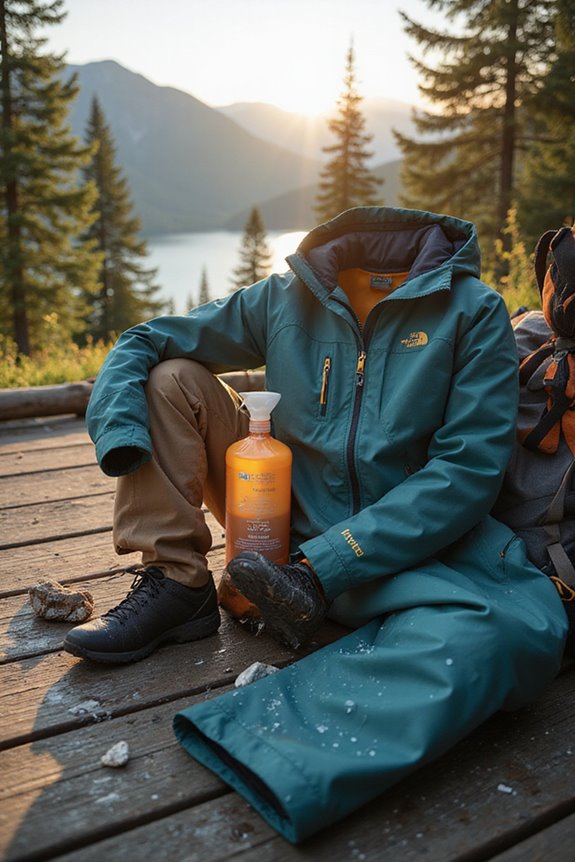
When it comes to keeping outdoor fabrics looking fresh and functional, a little care goes a long way. First, inspect the fabric types for any stains or damage—it’s like a health check for your gear! Brush off loose dirt with a soft brush, and you’ll avoid any abrasive mishaps. When choosing cleaning methods, opt for mild soap and lukewarm water; harsh chemicals are a no-go. For hand washing, soak the fabric and gently agitate with a sponge, ensuring you rinse thoroughly to banish soap residue. If machine washing, stick to cold water and a delicate cycle. Remember, air drying is your best friend—no wringing allowed! By following these steps, your outdoor fabrics will thank you with years of service.
Maintenance Guidelines to Extend Lifespan
Caring for technical outdoor fabrics goes beyond just a good scrub; it’s all about nurturing them for longevity. Regular inspections are key—spotting wear and stains early can save the day. A soft brush to whisk away dirt before it sets in is a game changer. Don’t forget fabric protectants; they keep those pesky water spots and UV rays at bay! Maintenance frequency should adjust based on your local weather—humid areas might need extra love. Monthly checks are a smart move, especially in high-traffic zones, while a thorough deep clean each season keeps everything fresh. As the seasons change, a little pre-season prep goes a long way in ensuring your fabrics are ready to shine!
Proper Storage Practices
Storing technical outdoor fabrics properly can feel a bit like a treasure hunt—finding the right spot to safeguard those beloved gear pieces is essential. To keep them in prime condition, opt for a cool, dry, and dark environment. Think of closed closets or dedicated storage rooms that shield your gear from pesky UV rays and humidity, which can lead to mildew. Using protective containers, like lidded plastic storage tubs, not only wards off moisture but also pesky insects. Clear containers are a bonus, allowing easy identification of your gear without excessive handling. Remember to stack containers carefully to avoid crushing delicate layers. By creating ideal storage conditions, those fabrics will be ready for your next outdoor adventure, all fresh and fabulous!
Handling Tips for Care and Preservation
To keep technical outdoor fabrics in tip-top shape, it’s essential to handle them with care, treating them like the prized possessions they are. Proper fabric handling starts with avoiding harsh chemicals and opting for mild soap during cleaning. Regularly checking seams can prevent mildew surprises, and air drying outdoors is a great way to keep them fresh—just don’t let the sun fade those vibrant colors! A little protection goes a long way; lightweight covers can shield fabrics from tree sap or bird droppings. Remember, preservation techniques are all about creating airflow during drying and storage, giving those fibers room to breathe. By following these simple strategies, outdoor gear can remain reliable, ensuring countless adventures ahead.
Frequently Asked Questions
Can I Use a Washing Machine to Clean Outdoor Fabrics?
The question of using a washing machine for outdoor fabrics hinges on appropriate machine settings and fabric types. Most technical materials can withstand machine washing, provided care labels are followed to maintain their integrity and performance.
Are There Specific Detergents Recommended for Outdoor Fabrics?
Specific detergent types, such as Nikwax and Sport-Wash, are recommended for outdoor fabrics. Cleaning tips emphasize avoiding regular detergents and fabric softeners to maintain breathability and performance of technical materials.
How Often Should I Clean My Outdoor Fabric Items?
Cleaning frequency for outdoor fabric items varies dramatically, akin to a relentless tide. Regular maintenance is essential; typically, items should be cleaned monthly or quarterly, depending on exposure and environment, to uphold their vibrant appearance and performance.
What Should I Do if My Fabric Develops Mold?
Upon discovering mold, one should prioritize immediate cleaning with appropriate solutions. Implement mold prevention tips, utilizing mild soap or diluted bleach, while ensuring thorough drying and regular maintenance to inhibit future growth and fabric degradation.
Can Outdoor Fabrics Be Repaired if Torn?
Approximately 70% of outdoor fabric damage can be repaired effectively. Various patching techniques, including fabric adhesives and sewing, offer durable solutions for tears, ensuring longevity and performance in challenging outdoor conditions when executed properly.

